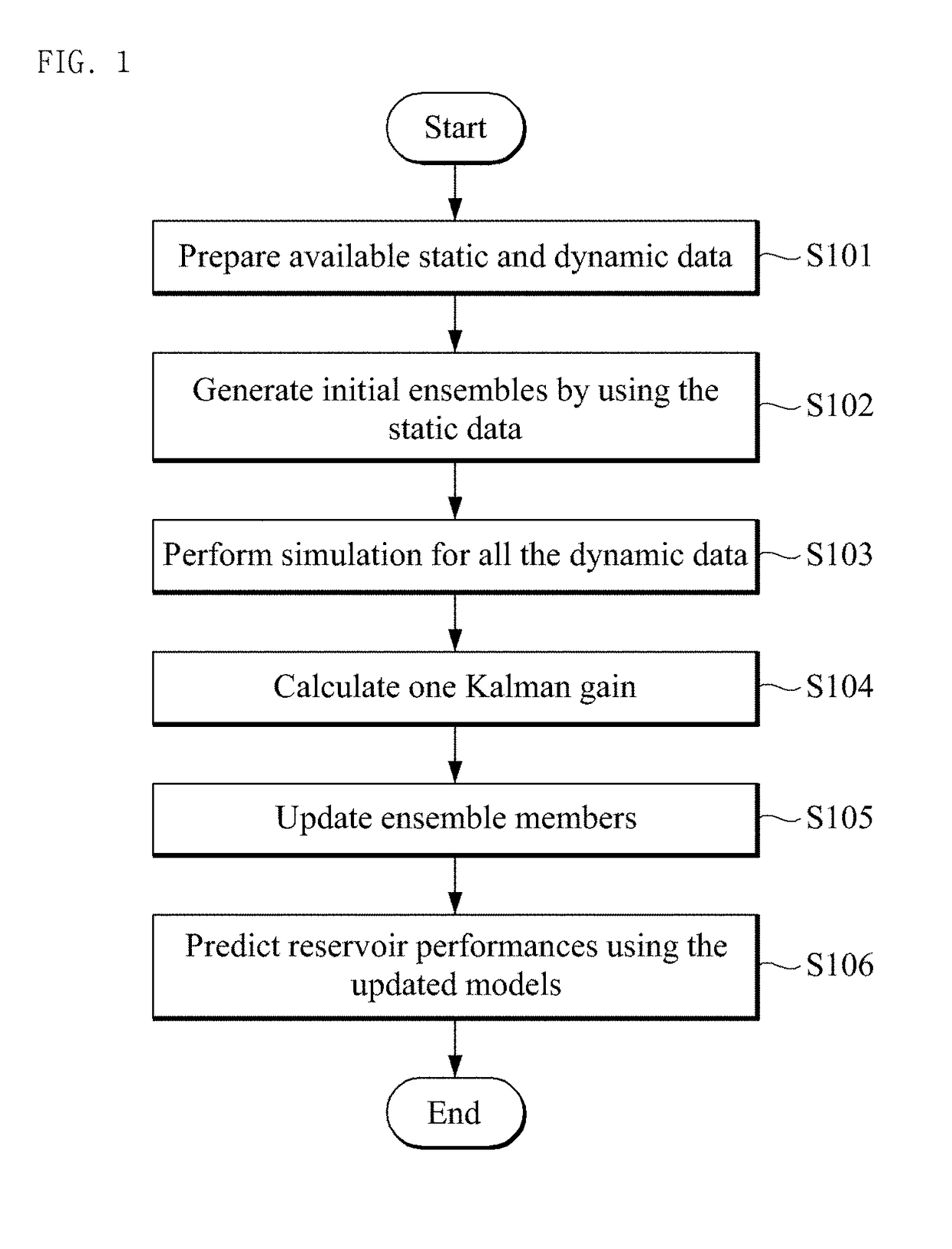Ensemble-based reservoir characterization method using multiple kalman gains and dynamic data selection
a reservoir and data selection technology, applied in the field of ensemble-based reservoir characterization methods using multiple kalman gains and dynamic data selection, can solve the problems of preventing the verification of consistent information, affecting the assimilation accuracy affecting the assimilation accuracy of dynamic data, so as to improve the assimilation capability of standard ensemble-based methods, improve the kalman gain and the observed dynamic data, and save calculation time
- Summary
- Abstract
- Description
- Claims
- Application Information
AI Technical Summary
Benefits of technology
Problems solved by technology
Method used
Image
Examples
Embodiment Construction
[0047]Hereinafter, exemplary embodiments of the present disclosure will be described in detail with reference to the accompanying drawings.
[0048]FIG. 2 is a flow chart illustrating a process for the ES with multiple Kalman gains and dynamic data selection according to an embodiment of the present disclosure.
[0049]In step S202, available data are prepared. The available data include static and dynamic data.
[0050]In step S204, initial ensembles are generated by using the static data.
[0051]In step S206, the initial ensembles are classified by clustering based on a distance-based method, wherein the initial ensembles are generated in step S204. The initial ensembles similar to each other are bound into a same group through this.
[0052]In step S208, meaningful data are selected among the dynamic data prepared in step S202.
[0053]In step S210, dynamic simulation for the dynamic data selected in step S208 is performed by using the initial ensembles generated in step S204.
[0054]In step S212, ...
PUM
 Login to View More
Login to View More Abstract
Description
Claims
Application Information
 Login to View More
Login to View More - R&D
- Intellectual Property
- Life Sciences
- Materials
- Tech Scout
- Unparalleled Data Quality
- Higher Quality Content
- 60% Fewer Hallucinations
Browse by: Latest US Patents, China's latest patents, Technical Efficacy Thesaurus, Application Domain, Technology Topic, Popular Technical Reports.
© 2025 PatSnap. All rights reserved.Legal|Privacy policy|Modern Slavery Act Transparency Statement|Sitemap|About US| Contact US: help@patsnap.com



